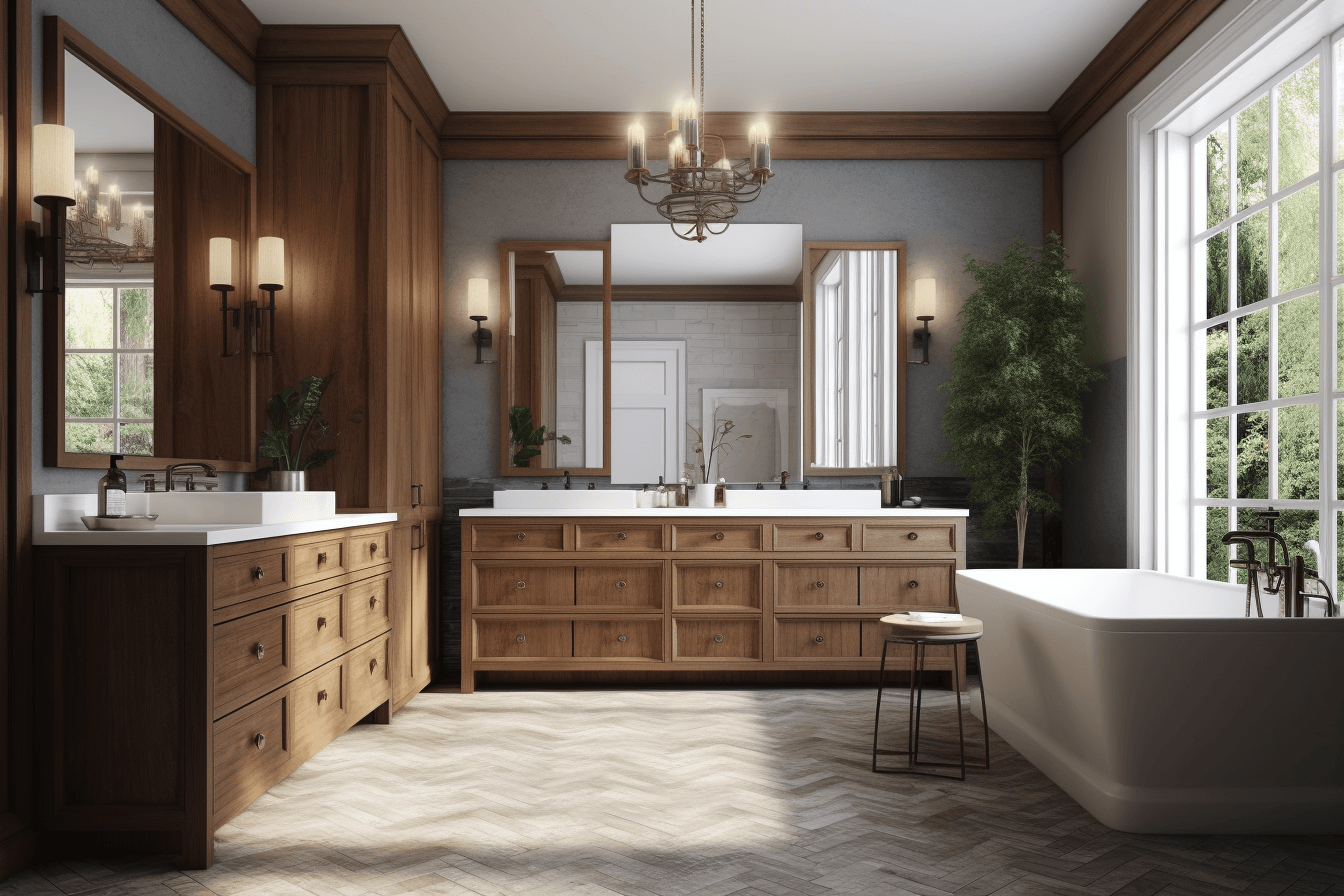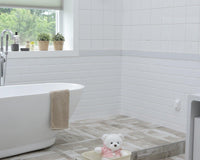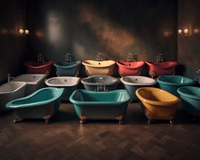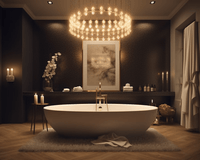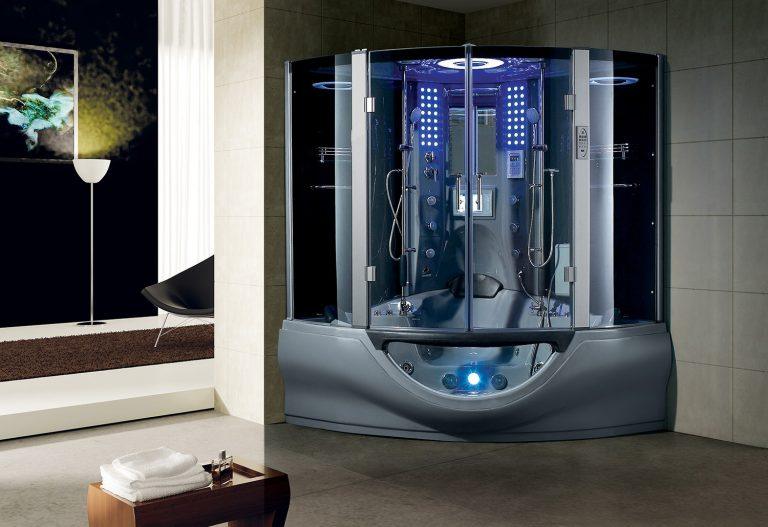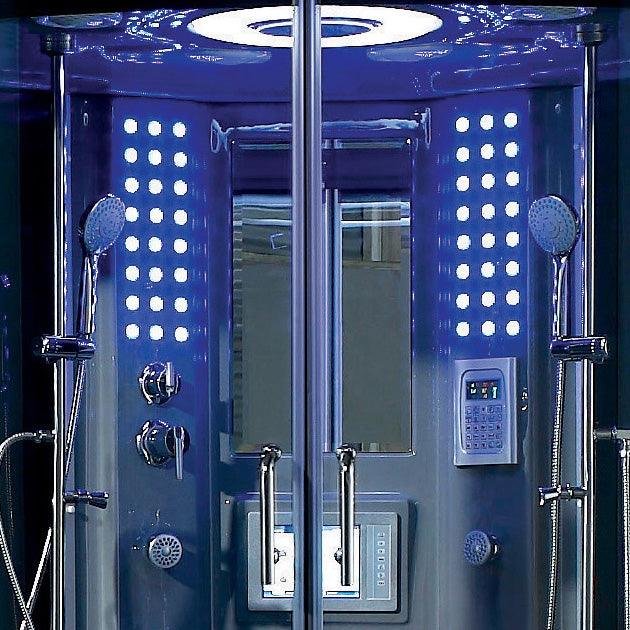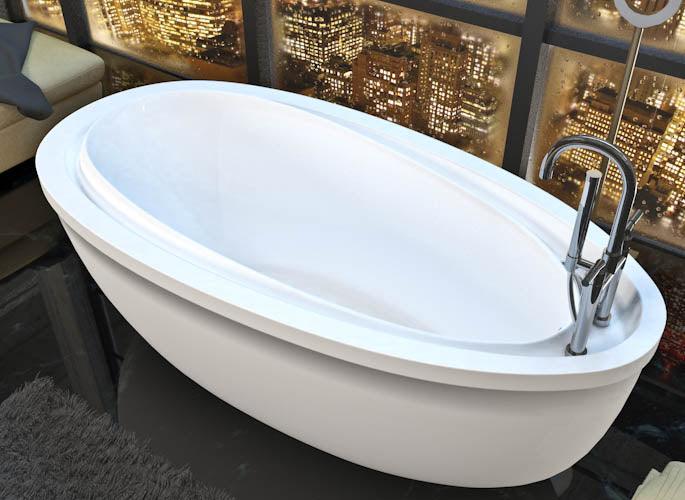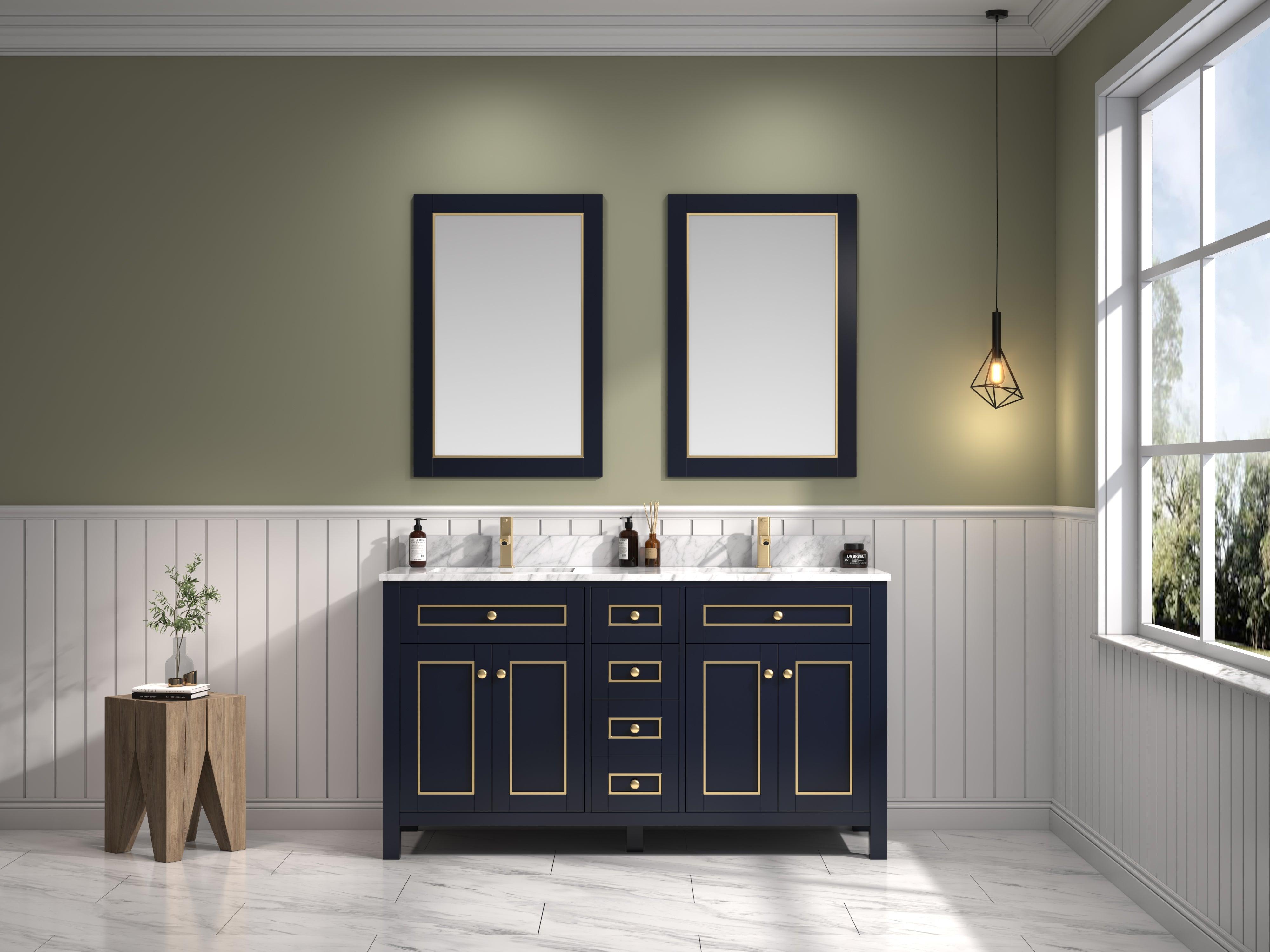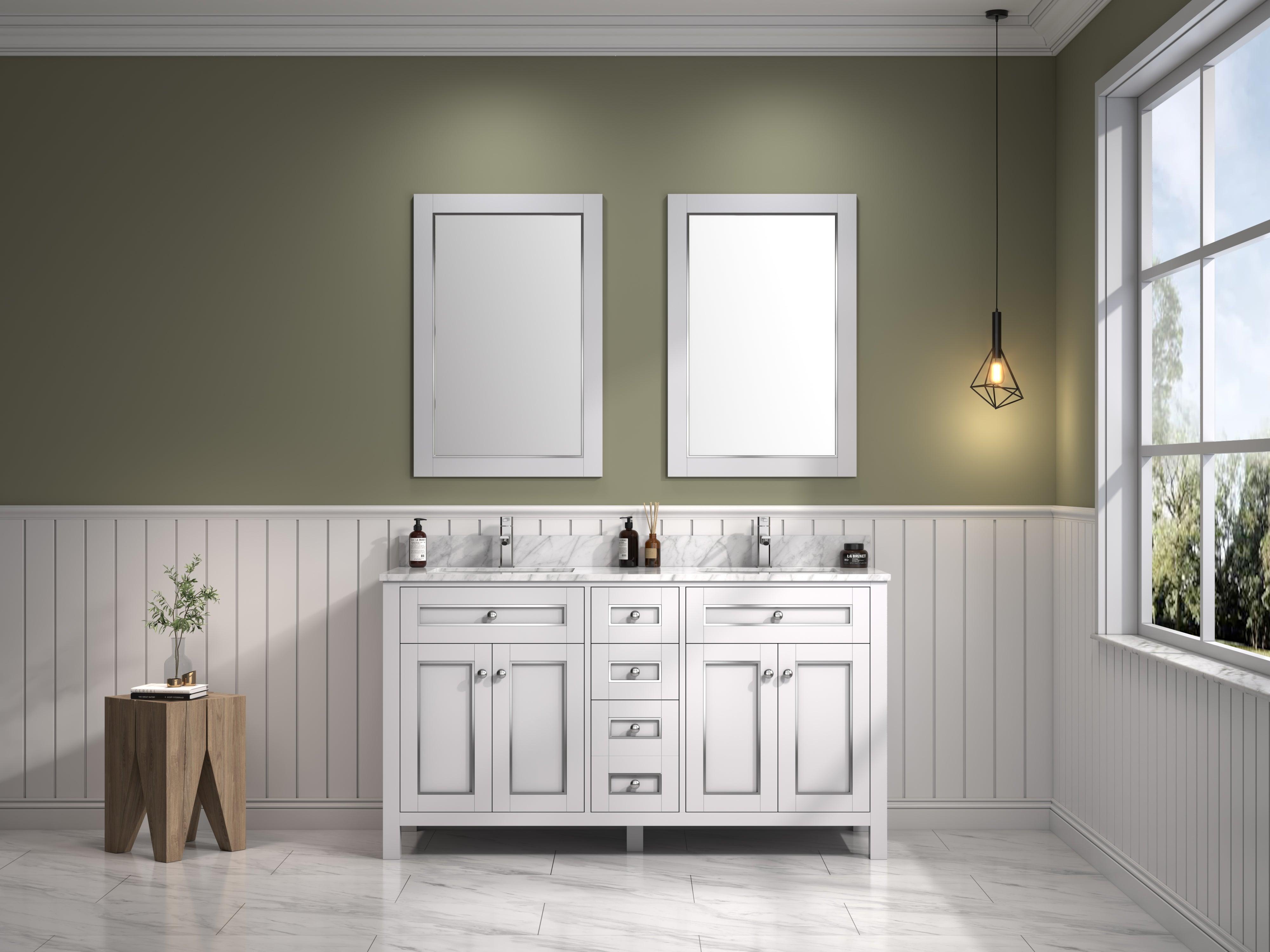Are you in the market for a new vanity for your bathroom but feeling overwhelmed by all the options out there? Don't worry, I'm here to help!
As a bathroom design expert, I know just how important it is to choose the perfect vanity that not only fits your personal style but also meets your practical needs.
First and foremost, consider the size of your bathroom. You don't want a vanity that's too big or too small for the space – it should fit comfortably without taking up too much room or appearing cramped.
Next, think about storage. Do you need drawers or shelves to keep all your toiletries organized?
And finally, consider the overall aesthetic you're going for. Are you looking for something modern and sleek or more traditional and ornate?
With these factors in mind, you'll be well on your way to choosing the perfect vanity for your bathroom.
Assessing Your Bathroom Space
Picture this: you walk into your bathroom and feel cramped, as if there is not enough space to move around. Maybe the fixtures are too bulky or the decor is overwhelming. Whatever the case may be, it's clear that your current bathroom vanity isn't doing its job in terms of space utilization and traffic flow. That's where choosing the perfect vanity becomes crucial.
As a bathroom design expert, I highly recommend assessing your bathroom space before deciding on a new vanity. Take note of any architectural peculiarities that could impact the size and placement of your chosen fixture. Consider factors like wall space, lighting, plumbing location, and ventilation as well.
This way you can ensure that you're making efficient use of available space while keeping functionality in mind. Another important aspect to consider when assessing your bathroom space is traffic flow. Will having a larger vanity impede movement within the room? Are drawers or cabinets facing awkwardly towards doorways? These things can affect how comfortable you feel using your own bathroom!
By taking into account both spatial limitations and personal preferences for ease of access, you'll be able to choose a vanity that meets all your needs without sacrificing style or comfort.
Determining Your Vanity Needs
Now that you have assessed your bathroom space, it's time to determine your vanity needs.
One of the first decisions you'll need to make is whether you want a custom or pre-made vanity. Custom vanities offer more flexibility in terms of size and design, but they also come with a higher price tag. Pre-made vanities are typically less expensive and easier to install, but may not fit your exact specifications.
Another important decision is whether you want a single or double sink vanity. Single sink vanities take up less space and can be more affordable, while double sink vanities provide extra counter space for couples or families sharing a bathroom. Keep in mind that installation costs will likely be higher for a double sink vanity due to additional plumbing requirements.
Ultimately, the perfect vanity for your bathroom will depend on your individual needs and preferences. Consider factors such as storage options, style, and budget when making your decision.
In the next section, we'll discuss selecting the right material for both form and function in creating the ideal vanity for your bathroom.
Selecting The Right Material
When selecting the perfect vanity for your bathroom, durability, cost and aesthetics should all be taken into consideration. You want something that'll last, that won't break the bank, and that looks great too!
Wood is a great option for durability and aesthetics, but can come with a higher cost. If you're looking for something cost effective and still stylish, opt for laminate or MDF. Granite and marble are great for a luxe feel, but can be expensive and require more upkeep.
Ultimately, it's all about finding a material that fits your lifestyle, budget and design vision.
Durability
Are you looking for the perfect vanity to complete your bathroom design?
When it comes to selecting the right material, durability should be at the top of your list. After all, nobody wants a vanity that will wear and tear easily after only a few months of use. However, longevity versus affordability is also something to consider.
For humid environments such as bathrooms, materials like solid wood or plywood are not recommended due to their tendency to warp or rot over time. Instead, opt for materials like MDF (medium-density fiberboard) or engineered wood which can withstand moisture without compromising its structure.
Another durable option is porcelain or ceramic sinks that do not corrode easily and can resist scratches from daily use.
When considering durability in bathroom vanities, it's essential to choose high-quality hardware such as hinges and drawer slides made of stainless steel or brass instead of plastic. These metal options provide better resistance against rusting and deterioration caused by humidity.
Investing in quality materials may cost more initially but will save you money on replacements in the long run. Remember, durability shouldn't compromise style – there are plenty of beautiful designs available that can stand up to daily wear and tear!
Cost
Now that we've covered the importance of durability when selecting materials for your bathroom vanity, let's move on to another crucial factor – cost.
As a bathroom design expert, I understand that sticking to a budget is essential for many homeowners. Fortunately, there are plenty of budget-friendly options available without sacrificing quality.
One option is laminate or thermofoil cabinets, which mimic the look of wood but at a lower price point. However, keep in mind that these types of materials may have hidden costs such as peeling or discoloration over time due to moisture exposure.
Another way to save money is by opting for pre-fabricated vanities instead of custom-made ones. While customized options provide more flexibility in terms of size and style, they come with a higher price tag. Pre-fab vanities offer standard sizing and styles while still providing high-quality materials and hardware.
It's important to remember that while cost is undoubtedly an essential consideration, it shouldn't be the only factor you consider when choosing materials for your bathroom vanity. Finding the right balance between affordability and longevity will ensure you get the most value out of your investment.
Aesthetics
Now that we've covered the importance of durability and cost when selecting materials for your bathroom vanity, let's move on to aesthetics.
As a bathroom design expert, I understand the significance of keeping up with the latest design trends while still making sure that it fits your personal style.
When it comes to choosing the right material for your vanity, consider incorporating current design trends into your decision-making process.
For instance, wood finishes are in demand nowadays as they provide an organic feel that is both warm and welcoming.
Moreover, color schemes can also play a vital role in setting the tone of your space. Neutral shades like white or beige will give off a clean and modern vibe while bolder colors such as navy blue or hunter green offer a more dramatic look.
Incorporating aesthetic elements into your choice of materials allows you to achieve a cohesive look throughout your bathroom space.
Remember that finding the perfect balance between functionality, affordability, and aesthetics will ensure that you get the most out of your investment.
Choosing A Style That Fits Your Bathroom Decor
Did you know that incorporating color in your bathroom decor can actually increase the value of your home? It's true!
When it comes to choosing a vanity style, consider how it will fit into the overall aesthetic of your bathroom. Mixing textures and colors is a great way to add visual interest and depth.
To get started, take a look at the existing materials in your bathroom. If you have wood floors or accents, consider a vanity with a similar finish for cohesiveness. Alternatively, if you have sleek modern tiles and fixtures, choose a vanity with clean lines and minimal details.
When incorporating color, think about what mood you want to create in your space. Do you want something calming and spa-like? Consider soft blues or greens. Want something bold and energizing? Go for bright pops of yellow or red. Whatever you choose, make sure it complements the rest of the room without overwhelming it.
Now that you've chosen a style that fits your bathroom decor, it's time to decide on a sink type. But before we get there, let's talk about some important factors to consider when making this decision.
Deciding On A Sink Type
When it comes to deciding on a sink type for your bathroom vanity, there are two main options: undermount or drop in.
Undermount sinks are installed underneath the countertop and provide a seamless look with easy clean-up.
Drop-in sinks sit on top of the counter, making them easier to install but potentially more difficult to keep clean around the edges.
Another consideration is whether you want a single or double sink.
A single sink can save space and be more affordable, while a double sink allows for multiple users at once and can increase functionality in larger bathrooms.
Keep in mind that a double sink may require a larger vanity size, so make sure to measure your space accordingly.
Ultimately, the decision between undermount vs. drop in and single vs. double will depend on your personal preferences and practical needs for your bathroom.
Take some time to consider what will work best for you before making your final selection.
Next up, we'll discuss how to properly measure for fit to ensure your new vanity looks great and functions perfectly in your space.
Measuring For Proper Fit
As the old adage goes, 'measure twice, cut once.' This is especially true when it comes to choosing the perfect vanity for your bathroom. Measuring accuracy is key in ensuring that your new vanity fits seamlessly into your space without any issues.
However, there are some common mistakes that people make when measuring for their new vanity. One of the most frequent errors is not accounting for plumbing and electrical connections. It's important to remember that these fixtures can take up valuable space behind the wall, which needs to be factored into your measurements.
Another mistake is assuming that all walls are perfectly straight and level. In reality, even newly constructed homes can have slight imperfections in their walls, so taking multiple measurements at different points along each wall can help ensure a proper fit.
Once you've taken accurate measurements and adjusted for plumbing and electrical connections, it's time to start considering lighting and mirror options. These elements work together with your chosen vanity to create a cohesive look and feel in your bathroom.
Consider what type of lighting will best suit both your aesthetic preferences as well as practical needs such as task lighting for grooming or applying makeup. Similarly, think about how mirrors can enhance natural light or reflect artificial light sources to brighten up your space.
Incorporating the right lighting and mirror choices into your bathroom design will elevate the overall look and functionality of your space. By avoiding common measurement mistakes and carefully selecting complementary lighting and mirror options, you'll be on track toward creating a stunning bathroom oasis that meets all of your needs.
Considering Lighting And Mirror Options
When it comes to choosing the perfect vanity for your bathroom, don't forget to consider lighting and mirror options.
Proper lighting placement can make or break a space, so ensure that your vanity is well-lit with fixtures on either side of the mirror rather than above it. This will help eliminate harsh shadows and provide ample illumination for daily grooming tasks.
Another important factor to keep in mind is the size of your mirror. You want to choose one that's large enough to reflect both natural and artificial light sources, while still fitting comfortably within the confines of your vanity space. A good rule of thumb is to select a mirror that's at least as wide as your sink or countertop area.
By taking these factors into consideration early on in the design process, you'll be able to create a functional and stylish vanity area that meets all of your needs.
With proper lighting and a well-sized mirror in place, you'll have an ideal space for getting ready each day.
Now let's move onto evaluating your budget and finding ways to save without sacrificing style or function.
Evaluating Your Budget
Now that you’ve considered your lighting and mirror options, it’s time to evaluate your budget.
It’s important to have a clear idea of how much you’re willing to spend before you start shopping for vanities. This will help guide your decision-making process and ensure that you don’t overspend.
When comparing prices, keep in mind that the cheapest option may not always be the best choice. You want to make sure that you’re getting a vanity that meets quality standards and will last for years to come.
Look for solid construction, durable materials, and finishes that are resistant to water damage and wear-and-tear.
Before making your final decision, shop around for the best deals. Check out different stores and online retailers to see if there are any sales or discounts available.
Don’t be afraid to negotiate with vendors or ask about price matching policies. With a little research and some savvy shopping skills, you can find the perfect vanity at an affordable price point.
Shopping For The Best Deals
Did you know that the average American spends around $1500 on bathroom remodeling each year? That's a significant investment, which is why it's important to find the best deals for your vanity.
In this section, we'll discuss some tips and tricks for shopping smart and finding discounts. Comparing prices is crucial when shopping for a new vanity. Don't settle for the first option you see – take the time to browse through different stores and websites to compare prices. You might be surprised at how much variation there can be between retailers. Make sure to also consider any additional costs such as shipping or installation fees.
Another key factor in getting the best deal is deciding whether to shop online or in-store. Shopping online allows you to easily compare prices across multiple websites without leaving your home, but keep in mind that shipping costs can add up quickly. On the other hand, shopping in-store gives you the opportunity to see and touch products before making a purchase, but may limit your selection.
To help you get started on finding great deals, here are some bullet points:
- Sign up for retailer newsletters or follow them on social media to stay updated on sales and promotions.
- Consider purchasing floor models or discontinued items for discounted prices.
- Look into financing options if needed, but make sure to read all terms and conditions carefully.
- Don't hesitate to negotiate with sales associates – they may have flexibility in pricing.
Now that we've covered how to shop smartly for your vanity, let's move onto discussing installation and maintenance tips.
Installation And Maintenance Tips
When it comes to installing a new bathroom vanity, homeowners are faced with the decision of whether to attempt a DIY installation or hire a professional. While a DIY approach can save money upfront, it's important to consider the level of expertise required for proper installation. Improperly installed vanities can lead to leaks and other issues down the line, so if you're not confident in your abilities, it may be worth investing in professional help.
Whether you opt for DIY or professional installation, regular cleaning and upkeep is essential for keeping your vanity looking and functioning its best. Depending on the materials used in construction, different cleaning products and techniques may be necessary. Always refer to manufacturer instructions when selecting cleaning products and avoid abrasive cleaners that could scratch surfaces.
Regular dusting and wiping down with a damp cloth can also go a long way towards preventing buildup of dirt and grime.
In addition to routine cleaning, there are some maintenance tasks that should be done periodically to keep your vanity running smoothly. Check all plumbing connections regularly for signs of leaks or corrosion. Tighten any loose screws or bolts as needed and replace worn out hardware promptly.
With proper care and attention, your bathroom vanity will provide both functional storage space as well as an attractive focal point for years to come.
Frequently Asked Questions
Can I Install A Floating Vanity In My Bathroom?
Did you know that floating vanities are becoming increasingly popular in modern bathroom designs?
In fact, according to a recent study, over 30% of homeowners now opt for this type of vanity due to its sleek and contemporary look.
If you're considering installing one in your own bathroom, there are a few things to keep in mind.
First off, be sure to weigh the pros and cons - while floating vanities can create the illusion of more space and make cleaning a breeze, they may not offer as much storage as traditional ones.
Additionally, pay attention to installation tips such as properly supporting the weight of the vanity and ensuring it's level.
And don't forget about size and space requirements - you'll want to choose a vanity that fits comfortably within your bathroom without overcrowding it.
As a bathroom design expert, I highly recommend exploring all options before making your final decision on whether or not to install a floating vanity.
How Much Clearance Should I Leave Between The Vanity And The Toilet?
When it comes to bathroom design, one important factor that many people overlook is the clearance between their vanity and toilet. This distance can greatly affect the functionality of your space, so it's crucial to get it right.
Ideally, you should leave at least 15 inches of space between your toilet and any surrounding fixtures or walls. However, this number may vary depending on the size of your vanity. If you have a larger vanity, you may need to increase this clearance in order to maintain proper accessibility and comfort in your bathroom.
So when selecting a vanity for your space, be sure to consider not only its style and size but also its impact on your overall layout and usability.
What Are The Benefits Of A Double Sink Vanity?
When it comes to bathroom design, space optimization is key. That's why a double sink vanity can be a great addition to any bathroom.
Not only does it provide ample counter space for two people, but it also allows for separate storage options and even different design choices for each sink area.
With so many design options available, you're sure to find a double sink vanity that fits both your functional needs and aesthetic preferences.
Don't hesitate to consider this option when designing or remodeling your bathroom!
Can I Customize The Size And Shape Of My Vanity?
You absolutely can customize the size and shape of your vanity!
Custom vanity materials allow you to create a unique piece that fits perfectly in your bathroom space.
And don't forget about vanity lighting options - they can really elevate the overall design.
As a bathroom design expert, I always recommend taking measurements and considering how much storage you'll need before getting started on customization.
With so many options available, it's easy to create a one-of-a-kind piece that meets all of your needs while also adding style to your bathroom.
How Do I Choose The Right Faucet For My Vanity?
When it comes to selecting the right faucet for your vanity, there are a few factors you should consider.
Firstly, think about the finishes that will complement your bathroom's overall aesthetic. Brushed nickel and chrome are popular choices that offer durability and a modern look.
Secondly, decide whether you prefer a single or double handle faucet. Single handles are typically easier to use and require less space on your countertop, while double handles can provide greater control over water temperature.
Ultimately, choose a faucet that meets both your functional needs and decorative preferences to complete your bathroom design with style and practicality in mind.
Conclusion
In conclusion, choosing the perfect vanity for your bathroom requires careful consideration of several factors.
From the size and shape to the type of sink and faucet, every detail contributes to creating a functional yet stylish space that meets your needs.
As an expert in bathroom design, I suggest taking measurements and assessing your existing plumbing before selecting a floating or custom-sized vanity.
Additionally, consider opting for a double sink if you share the bathroom with others.
Lastly, choose a faucet style that complements your overall aesthetic while providing practical functionality.
By taking these steps, you can create a beautiful and functional bathroom that enhances your daily routine.
So go ahead and get creative - it's time to make your dream bathroom a reality!

